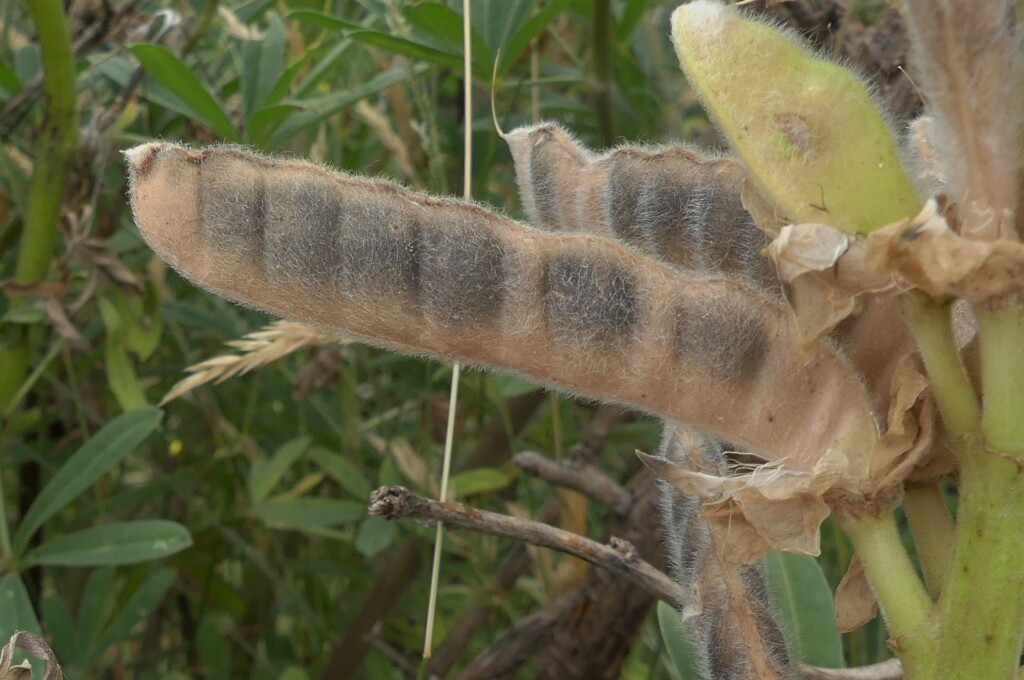Lupinus
Annual or perennial herbs, rarely shrubs. Leaves alternate, usually palmately 5–15-foliolate, rarely 1–3-foliolate; petiolate; leaflets entire, linear, oblong or oblanceolate; stipules fused to base of petiole. Inflorescence a terminal pedunculate raceme; flowers pedicellate; bracts often caducous; bracteoles usually fused to base of calyx, persistent. Calyx deeply bilabiate; upper lip 2-toothed or entire; lower lip shallowly 2–3-toothed or entire; corolla blue, violet, white, or variegated, rarely yellow; standard orbicular to broad ovate, margins reflexed, equal to wings and keel; wings falcate-oblong or obovate, connate at apex, enveloping keel; keel incurved, beaked, apex dark. Stamens monadelphous; anthers alternately long and short. Ovary sessile; ovules 2–many; style incurved, glabrous; stigma terminal, often bearded. Pod oblong, more or less compressed, constricted between seeds, dehiscent; seeds 2–12, hilum sunken, exarillate.
About 150-200 species, from the Mediterranean region and North and South America; 6 species naturalised in Australia.
Jeanes, J.A. (1996). Fabaceae. In: Walsh, N.G.; Entwisle, T.J., Flora of Victoria Vol. 3, Dicotyledons Winteraceae to Myrtaceae, pp. 663–829. Inkata Press, Melbourne.
 Spinning
Spinning


